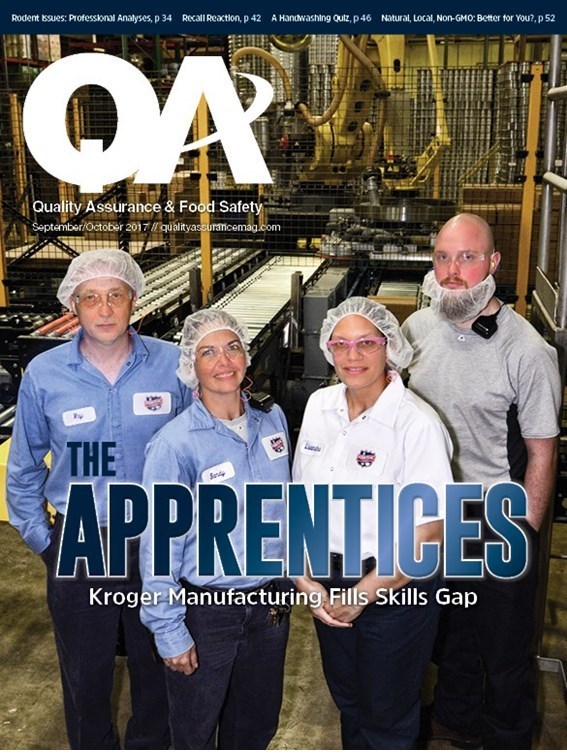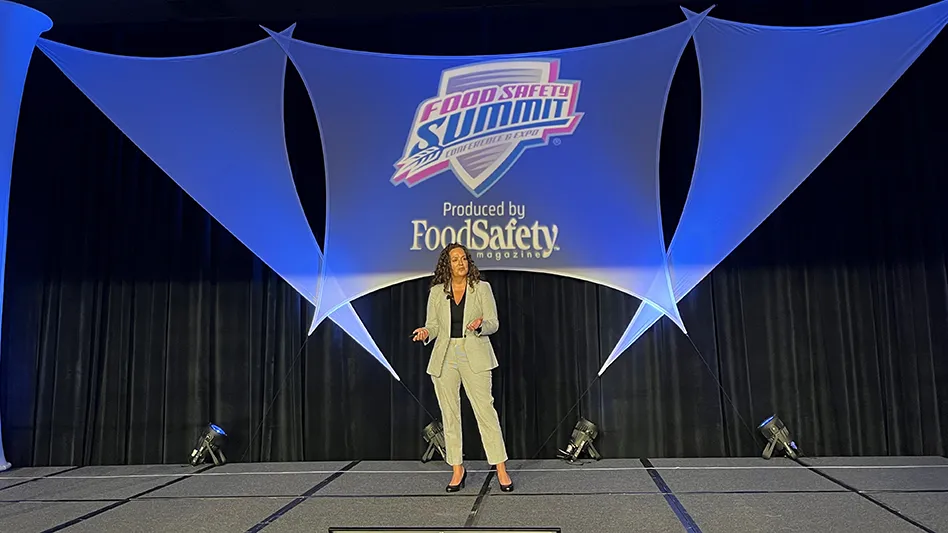
Does a person need to be a subject matter expert (SME) to deliver effective training? No; he or she needs to be an effective trainer to deliver expert subject matter. Think of the times that an SME does not deliver an effective training session or presentation. Time is wasted. But, how does a person ensure he or she is an effective trainer? What is a practical solution?
We have many opportunities to provide learning experiences, from an impromptu cleaning tip on the plant floor to developing a food safety training program. Effective adult learning is the result of intelligent effort: the instructors doing their jobs and the learners being responsible to do theirs.
Workers are coming into today’s workplace with online technology and instant information with a global mindset that their elders can hardly imagine, and the fact that adults learn differently than children has been known for centuries. In the end, it is a balance between the new and the old that leads to better adult-learning effectiveness.
So the key is to know your audience. Some of today’s trainers are being called “adult-learning delivery specialists,” which I see as reflecting an accurate job title.
Following are nine adult-learning tips and techniques to consider if you are developing a training program.
1. Informal learning as a part of the formal learning process. Adults are experienced; they want to be treated as such, and some want to share. On-the-job work experience and informal conversation are important learning activities. Building key informal learning activities, such as take-home food safety tips, into the process will improve the learning curve.
2. Directed self-study. In this approach, an instructor directs an employee to a specific approved resource (e.g., a website such as this).
3. Use of varying styles. Adults tend to learn through three styles in varying degrees and combinations: visual (see it); auditory (hear it); kinesthetic (do it). Deliver your message by utilizing each of these three learning styles. Using pictures, telling stories, and providing hands-on exercises will enhance any message being offered.
4. “Knowledge must come through action,” as Socrates stated centuries ago. Learning with action is an effective method and a fun way to train.
5. Why before how. Since adults tend to take the approach of “What’s in it for me?” (WIIFM), you need to explain the individual benefits up front. As also stated in #2, training programs should guide learners to approved resources to analyze, synthesize, and make right choices from a rich depository — use the Internet wisely.
6. MBT (maximum brain/butt/bladder tolerance). Depending on the time of day, MBT can be as short as 10-15 minutes and usually not longer than 45-50 minutes. Have you listened to a lecture with your brain going somewhere else? How does a trainer avoid brain fog? Think about the audience and do something different at 10- to 15-minute intervals. Vary your delivery to reflect the three learning styles. The movement from data to information to knowledge to wisdom requires time to think, question, percolate, and apply. Provide breaks and engage audiences with interaction activities.
7. The five-step approach is a standard model for structuring formal learning:
- Rationale. Explain why participants should learn this material and how it applies to their work.
- Objectives. State what learners will be able to do upon completion.
- Activities. Identify interesting things for them to do to attain objectives.
- Evaluation. Check whether participants have learned; ask key questions, quiz them, give criterion reference tests.
- Feedback. Request input from the learners to correct, confirm, and re-enforce your instruction.
8. Learner centered. Adults want to be treated as independent, capable people. Give them the freedom to make mistakes, yet build in evaluation and feedback steps assuring the learning is meeting the objective(s). A quiz is usually adequate to validate that objectives have been met while assuring a successful effort. Good validation provides good documentation of the desired learning. This learning validation and documentation can provide unforeseen benefits.
9. Key adult-learning principles. Within the above are four primary principles that adults expect training to include. That is, adults expect the training to utilize their experience (informal learning and engagement), readiness (WIIFM), action (on-the-job application), and autonomy (freedom to make mistakes). Your adult-training program should be based on these four principles.
A wise man once said we hear 50% of what is said; we understand 50% of what we hear; we believe 50% of what we understand; and we remember 50% of what we believe. A calculation of these percentages indicates that we retain only 6.25% of what is said. This wise man apparently was not a professional instructor, as 6.25% is not acceptable.
The job we hold as educators, trainers, instructors, and even speakers is to help adult learners learn. Their success is our success, and together we achieve more.
Good adult learning is no accident; it is the result of intelligent effort by the program designer and/or instructor. Time is too valuable to be wasted on poor training.

Explore the October 2017 Issue
Check out more from this issue and find you next story to read.
Latest from Quality Assurance & Food Safety
- FDA Issues Update on Post-Market Assessment of Tara Flour
- ASI Announces Training Partnership with Rootwurks
- Nfinite Nanotech Closes $6.5 Million Seed Financing to Create Flexible Food Packaging with Nanotechnology
- University of Pretoria Food Science Student Wins IFT and PepsiCo’s Academic and Travel Undergraduate Hybrid Scholarship
- Kraft Natural Cheese and Shawn Johnson East Celebrate Launch of Kraft Signature Shreds
- Natural Sourcing International Announces Voluntary Recall of Black Chia Seeds
- PTNPA's DC Fly-In Connects Members with Policymakers
- Breck Partners Acquires NPX One





